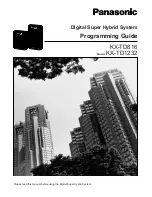
Appendix/Index
190
The exposure standard for wireless mobile phones employs a
unit of measurement known as the Specific Absorption Rate
(SAR). The SAR limit set by the FCC is 1.6 W/kg. Tests for SAR
are conducted using standard operating positions as accepted
by the FCC with the phone transmitting at its highest certified
power level in all tested frequency bands. Although the SAR is
determined at the highest certified power level, the actual SAR
level of the phone while operating can be well below the
maximum value. This is because the phone is designed to
operate at multiple power levels so as to use only the power
required to reach the network. In general, the closer you are to
a wireless base station antenna, the lower the power output
level of the phone.
Before a phone model is available for sale to the public, it must
be tested and certified to prove to the FCC that it does not
exceed the limit established by the U.S. government-adopted
requirement for safe exposure. The tests are performed on
position and locations (for example, at the ear and worn on the
body) as required by FCC for each model. The highest SAR
value for this model phone as reported to the FCC, when tested
for use at the ear, is 0.473W/kg, and when worn on the body, is
0.765W/kg. (Body-worn measurements differ among phone
models, depending upon available accessories and FCC
requirements).
While there may be differences between the SAR levels of
various phones and at various positions, they all meet the U.S.
government requirements.
The FCC has granted an Equipment Authorization for this
model phone with all reported SAR levels evaluated as in
compliance with the FCC RF exposure guidelines. SAR
information on this model phone is on file with the FCC and
can be found under the Equipment Authorization Search
section at http://www.fcc.gov/oet/ea/fccid/ (please search on
FCC ID VQK-F02E).
For body worn operation, this phone has been tested and
meets the FCC RF exposure guidelines. Please use an
accessory designated for this product or an accessory which
contains no metal and which positions the handset a minimum
of 1.5 cm from the body.
*
In the United States, the SAR limit for wireless mobile phones used
by the general public is 1.6 Watts/kg (W/kg), averaged over one gram
of tissue. SAR values may vary depending upon national reporting
requirements and the network band.
This equipment has been tested and found to comply with the
limits for a Class B digital device, pursuant to part 15 of the FCC
Rules.
These limits are designed to provide reasonable protection
against harmful interference in a residential installation. This
equipment generates, uses and can radiate radio frequency
energy and, if not installed and used in accordance with the
instructions, may cause harmful interference to radio
communications. However, there is no guarantee that
interference will not occur in a particular installation.
If this equipment does cause harmful interference to radio or
television reception, which can be determined by turning the
equipment off and on, the user is encouraged to try to correct
the interference by one or more of the following measures:
- Reorient or relocate the receiving antenna.
- Increase the separation between the equipment and
receiver.
- Connect the equipment into an outlet on a circuit different
from that to which the receiver is connected.
- Consult the dealer or an experienced radio/TV technician
for help.
Содержание F-02E Arrows X
Страница 1: ...F 02E INSTRUCTION MANUAL 13 2...
Страница 204: ...Appendix Index 202 z 1Seg 140...
















































